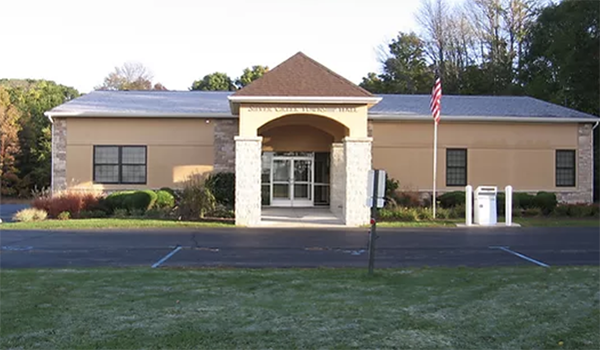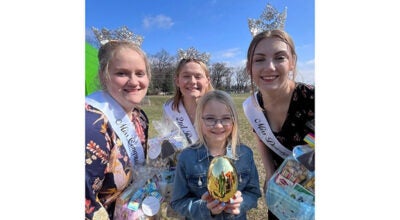Keeping all that water blue
Published 6:20 pm Thursday, November 1, 2012
From the summer drought to superstorm Sandy swamping the Eastern seaboard, water made waves in 2012.
In southwest Michigan, the wrist on a mitten surrounded by the Great Lakes, quality is critical in watersheds, the land which drains to common bodies of water.

Marcy Colclough, senior planner with Southwest Michigan Planning Commission, with Dowagiac Rotary Club President Robert Wagel.
The St. Joseph River Watershed, for example, is third largest in the Lake Michigan basin at 210 miles, spanning two states, Michigan and Indiana, and 15 counties inhabited by 1,524,941 people (2000 census). It drains 4,685 square miles. Seventy-percent of the land is in agricultural use. At the same time, 53 percent of wetlands have been filled.
Marcy Colclough, senior planner for Southwest Michigan Planning Commission in Benton Harbor, visited Dowagiac Rotary Club Thursday.
The agency, one of 14 in the state, has a 10-member staff and covers a tri-county area of Cass, Berrien and Van Buren.
“Water flows to Dowagiac from Decatur, then you send yours to Niles,” she said. “Dowagiac (Creek and River) is a smaller watershed within St. Joseph River Watershed. Cass County has 122 lakes, from four to over 1,000 acres; Dowagiac Creek; Christiana Creek; Rocky River; and wetlands, which are very important. There are active projects to protect the Galien River, the Paw Paw River and the Black River in South Haven.”
There are two types of pollution — point source, such as an industrial pipe discharging from a factory, which is easier to regulate than runoff, which is source of more than 60 percent, from agriculture, lawn fertilizer, pet waste, septic tanks, parking lots, washing and maintaining cars, then dumping oil down drains.
“When I worked in Cass County, there was a fast-food restaurant in Dowagiac which put the grease from their French fryer down the storm drain,” Colclough said. “Most water pollution comes from everyday household activities. Water pollution can lower property values, restrict recreation, kill fish and get into our drinking groundwater.”
“One good thing about Cass County,” she said, “is a lot of wetlands remain. There’s a lot land owners can do,” such as Frank McKaye’s conservation easement with the land conservancy along M-62 outside Dowagiac.
“Once you move from natural areas to impervious areas, such as paved parking lots, roads and rooftops, water runs off faster and picks up pollutants,” Colclough said. “The hydrology changes. Flooding increases and erodes stream banks. Once 10 percent of a watershed is covered with impervious areas, you’re impacting waterways. Twenty to 30 percent, you start degrading the water quality. The good news is we know practices that can mitigate the impact to water quality. Low-impact development slows down water, spreads it out and soaks it in to lessen impact downstream. There are a lot of techniques, like green roofs with plants and rain gardens that soak up water. The best example is the Pokagon Band’s community center, which employs all these techniques.”






